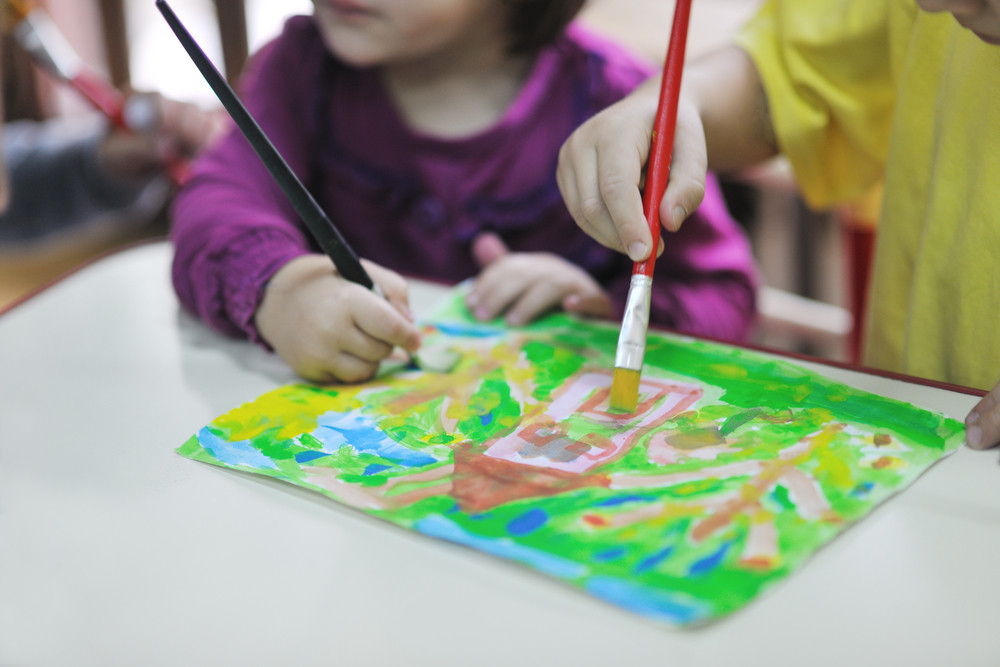Highlights
- STREAM learning blends science, technology, reading, engineering, art, and math to build critical thinking and creativity early on.
- Hands-on, play-based activities are essential—look for classrooms with open-ended projects and integrated, theme-based learning.
- Qualified, engaged teachers make the biggest difference—ask about training, curriculum planning, and how they support all learning styles.
- Parental involvement and communication should be encouraged through regular updates, student portfolios, and at-home learning suggestions.
- Read online reviews to learn from other parents’ experiences and get a clearer picture of the school’s strengths and culture.

Choosing the right preschool is one of the most important early decisions you’ll make for your child. In recent years, more parents have started prioritizing programs that incorporate STREAM—Science, Technology, Reading/Writing, Engineering, Arts, and Math—into early learning experiences. Unlike traditional models that focus solely on literacy or basic math, STREAM takes a more integrated, well-rounded approach. It reflects the real-world interconnection of disciplines and helps foster not only academic skills but also creativity, problem-solving, collaboration, and curiosity.
In Scottsdale, AZ—a city known for its strong family communities and commitment to education—there are numerous preschool options. However, not all STREAM programs are created equal. This guide will help you understand what STREAM actually looks like in a preschool setting, what research says about its value, and how to evaluate preschools based on your child’s developmental needs and your family’s values.
Why STREAM Belongs in Early Education
STREAM builds on early childhood education’s foundation by offering meaningful exposure to multiple domains of learning in a cohesive, developmentally appropriate way. Rather than teaching science or reading in isolation, STREAM promotes integration—helping young children see how knowledge and skills interact.
According to the American Institutes for Research, high-quality preschool programs support development across cognitive, social-emotional, physical, and language domains, and should include content-rich experiences that go beyond rote learning. STREAM does just that by embedding math into building projects, science into art, and literacy into engineering challenges. Preschoolers might observe plant growth, write stories about their experiment, count leaves, and create artistic depictions—all within one thematic unit.
Furthermore, a 2022 study from the University of California Irvine found that children exposed to high-quality, interactive STEM experiences in preschool were significantly more likely to demonstrate stronger math and science achievement by eighth grade. These benefits held up across socio-economic and gender lines. STREAM lays the groundwork for success across a lifetime of learning—not just in school, but in how children approach the world.
What STREAM Looks Like in Practice
STREAM in preschool doesn’t mean sitting at a desk with a workbook. Instead, it looks like engaged, hands-on exploration. A science project may involve mixing colors to observe chemical changes, while the engineering component might challenge students to build bridges using blocks or recycled materials. Reading and writing come in when kids describe their process, draw pictures of their ideas, or retell their experiences through stories. Technology might involve coding with age-appropriate robots, using tablets for interactive math games, or watching live feeds of animal habitats to spark curiosity.
The best STREAM classrooms are intentionally designed for open-ended play and inquiry. Children rotate through activity centers focused on different domains but guided by a common theme—like “under the sea” or “how things move.” Teachers encourage questioning, observation, prediction, and experimentation, all while supporting vocabulary development, social-emotional regulation, and motor coordination.
This model supports every type of learner—visual, kinesthetic, auditory, and linguistic—while also cultivating essential 21st-century skills like critical thinking, adaptability, and innovation.
Key Qualities of a High-Quality STREAM Preschool
When evaluating Scottsdale-area preschools that advertise STREAM programs, look beyond the label. Here are six key traits to look for:
- Curriculum Integration
STREAM shouldn’t be a series of isolated lessons. Look for evidence that literacy, math, science, and the arts are blended into cohesive weekly or monthly themes. Ask how teachers plan and scaffold learning objectives across domains. - Play-Based & Inquiry-Driven Approach
STREAM activities should invite curiosity and creativity, not enforce rigid answers. The National Association for the Education of Young Children (NAEYC) strongly supports guided play as the most effective method for academic and social learning at this age. - Developmentally Appropriate Practices (DAP)
STREAM concepts must be adjusted for the early childhood level. That means using storytelling instead of lectures, manipulatives instead of worksheets, and open-ended questions instead of quizzes. Teachers should understand how young children grow and adapt accordingly. - Trained, Reflective Educators
STREAM doesn’t teach itself. Skilled teachers know how to prompt exploration, scaffold challenges, and facilitate peer interactions. Ask how staff are trained, how often they update their knowledge, and what role they play in curriculum planning. - Documentation and Assessment
High-quality programs monitor each child’s growth through portfolios, anecdotal notes, photos, and developmental checklists. These help ensure STREAM activities are building the intended skills and provide insight into your child’s progress over time. - Parent Communication & Involvement
STREAM thrives when there’s collaboration between home and school. Look for programs that offer regular updates, encourage parent involvement, and provide ideas for at-home enrichment that complements classroom learning.

What to Observe During a School Tour
You’ll get the best sense of a school’s STREAM approach by visiting in person. Here’s what to watch for:
- Are there hands-on activity stations for building, art, tech, and reading?
- Do children appear engaged, cooperative, and excited about what they’re doing?
- Are teachers asking open-ended questions like “What do you think will happen?” or “How could we try that differently?”
- Is there student work on display that reflects creative, interdisciplinary learning?
- How is progress documented and shared with families?
Also, don’t hesitate to ask for a sample weekly plan. This will give you a clear idea of how STREAM subjects are implemented on a regular basis.
Don’t Forget to Check Reviews
While in-person visits are crucial, online reviews can offer additional insight into a school’s culture, communication style, and consistency. Look for patterns—are multiple parents praising the same strengths, like creativity or nurturing staff? Are concerns (if any) addressed professionally by the school? Reviews on local parenting forums or preschool directories can help you get a well-rounded picture and confirm your impressions.
Questions to Ask Preschool Staff
To further gauge the depth and authenticity of a STREAM program, consider asking:
- “Can you describe a recent STREAM unit and how the children responded to it?”
- “How do you handle different learning paces and styles within the same project?”
- “What kind of materials do children use in your STREAM activities?”
- “How are parents involved in supporting STREAM learning at home?”
- “What strategies do you use to foster teamwork and communication in young learners?”
Their answers should reflect not just enthusiasm, but a thoughtful, research-informed philosophy about early education.
Supporting STREAM at Home
Even outside of school, you can support your child’s STREAM learning with simple, everyday activities:
- Take nature walks and count patterns in leaves or clouds.
- Build with blocks or recycled materials and talk about stability.
- Read books about science or engineering and ask open-ended questions.
- Provide art supplies and let your child express ideas from what they’re learning.
- Try basic kitchen experiments—like dissolving sugar in different liquids—and ask your child to guess what will happen.
By reinforcing inquiry and exploration at home, you strengthen what they’re learning at school and cultivate a mindset of curiosity that will benefit them for life.
Final Thoughts: Your Child’s Future Starts Here
In Scottsdale, many preschools now advertise STREAM curriculum—but as a parent, it’s up to you to dig deeper. A true STREAM program goes beyond colorful posters and occasional science days. It offers integrated, hands-on, developmentally appropriate experiences, delivered by trained teachers who understand how to spark and sustain a young child’s desire to learn.
When you find the right STREAM preschool, you’re setting your child on a path that celebrates both creativity and critical thinking. You’re giving them the tools to build, imagine, question, and solve—essential skills not just for kindergarten readiness, but for navigating the future.
By visiting schools, asking the right questions, and trusting your instincts, you can confidently choose a program where your child will thrive—emotionally, socially, and intellectually.

